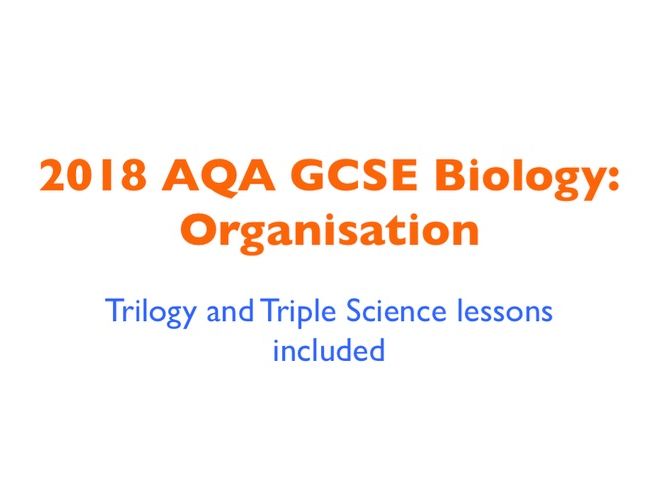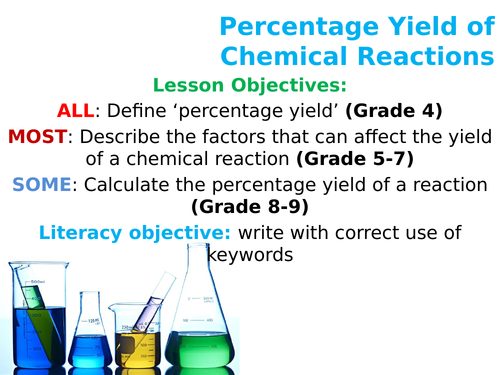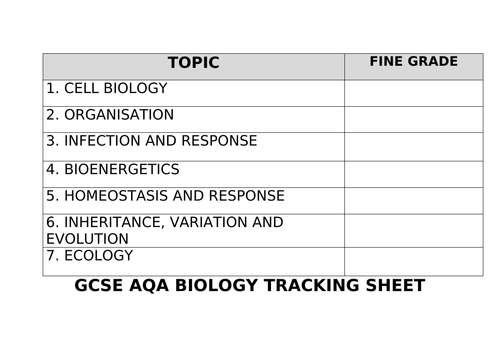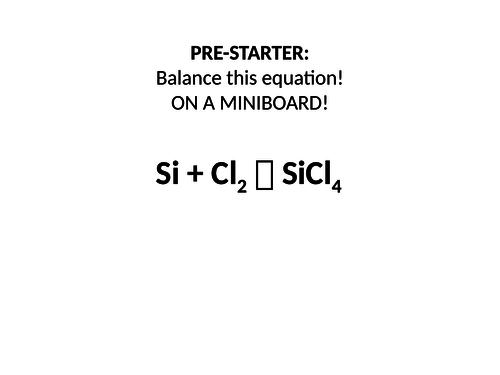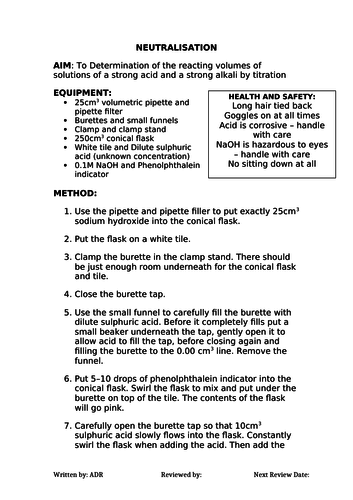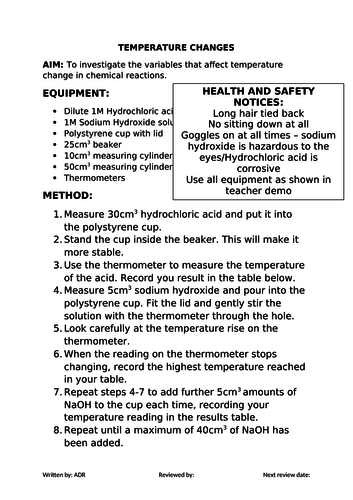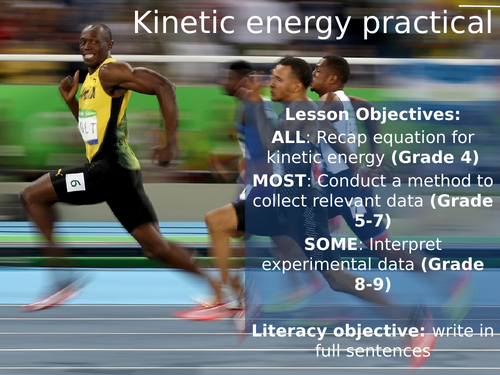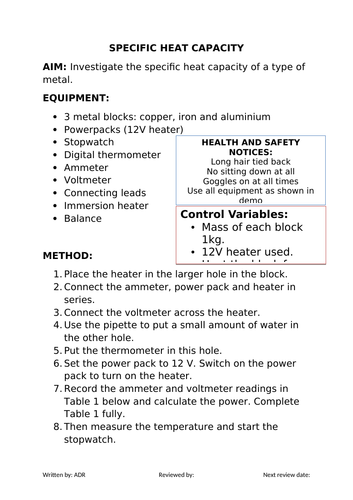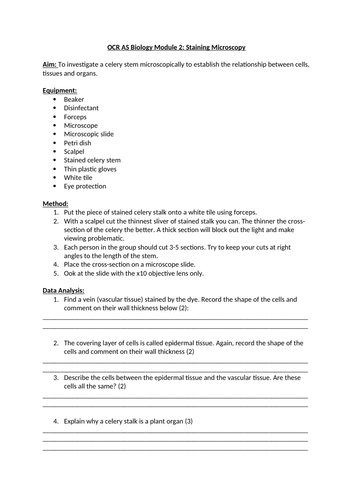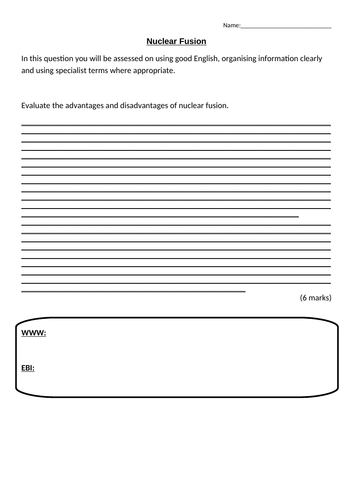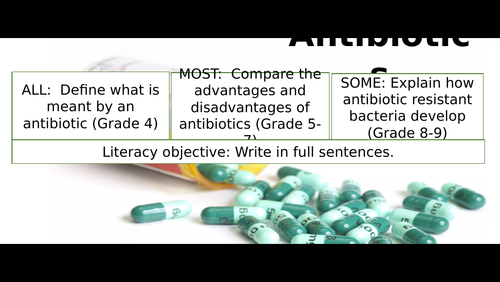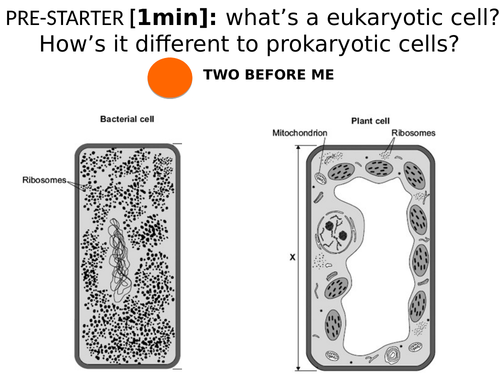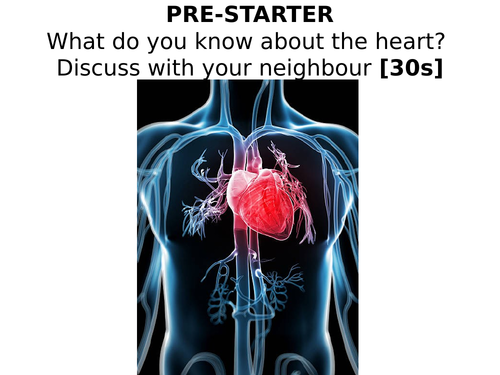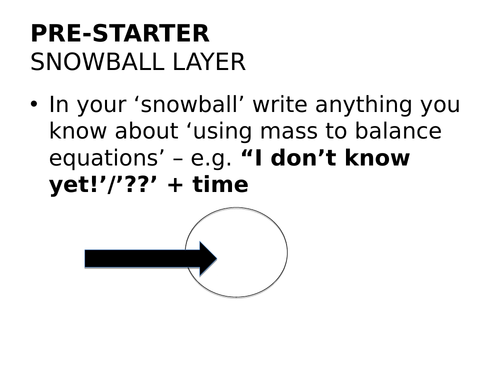172Uploads
30k+Views
2k+Downloads
Featured resources

2018 AQA GCSE Biology Unit 1: Organisation - Trilogy and Triple science lessons included
This pack contains all the lessons for teaching the Organisation module of Biology Unit 1 (B1) of the new 2018 AQA GCSE specifications for Combined Science: Trilogy and GCSE Biology.
All of these high quality lessons have the following features embedded:
Lessons have Bloom’s Taxonomy embedded throughout which are also graded for differentiation.
Stretch and challenge tasks throughout (including Grade 8-9+ questions and extended writing)
AfL (3 progress checks per lesson embedded)
Differentiation is strong as has been noted in all formal school observations for the last 2 years of teaching AQA. Observations of these lessons has always evidenced that these lessons are consistently of a ‘good’ OFSTED standard.
Narrative of lesson structure is clear and focused as well as engaging.
Pre-starter prepared.
All lessons are geared with top-down approach pedagogy and provide inclusive differentiation for low attaining and medium attaining pupils as well.
All lessons should be ‘tweaked’ to the needs of your own pupils.

2018 AQA GCSE Chemistry Unit 1 (C1): Quantitative Chemistry - Percentage Yield L5
This is the lesson used to teach Percentage Yield in accordance with the new 2018 AQA GCSE specification for Combined Science: Trilogy and GCSE Chemistry.
This high quality lesson has the following features:
Lessons have Bloom’s Taxonomy embedded throughout which are also graded for differentiation.
Stretch and challenge tasks throughout (including Grade 8-9+ questions and extended writing)
AfL (3 progress checks per lesson embedded)
Differentiation is strong as has been noted in all formal school observations for the last 2 years of teaching AQA. Observations of these lessons has always evidenced that these lessons are consistently of a ‘good’ OFSTED standard.
Narrative of lesson structure is clear and focused as well as engaging.
Pre-starter prepared.
All lessons are geared with top-down approach pedagogy and provide inclusive differentiation for low attaining and medium attaining pupils as well.
In order to take full advantage of this resource, it should be ‘tweaked’ to the needs of your own pupils.

2018 AQA GCSE Separate Science Tracking Sheets
This pack contains tracking sheets for students in KS4 who are on the 2018 AQA GCSE Separate Science pathways: GCSE Biology, GCSE Chemistry and GCSE Physics.
The tracking sheets are simple and straight to the point: ensuring students are documenting their performance in each of the modules for which they are assessed in terms of knowledge and skills of how science works. These resources can be freely modified to meet your science department’s needs.
Combined Science: Trilogy tracking sheets are also available. A bundle of Combined Science: Trilogy and Separate Science Tracking sheets is also available at a discounted price, please navigate through our shop to find out more.

2018 AQA GCSE Chemistry Unit 1 (C1): Quantitative Chemistry - Equations and Calculations L2
This is the lesson used to teach Equations and Calculations in accordance with the new 2018 AQA GCSE specification for Combined Science: Trilogy and GCSE Chemistry.
This high quality lesson has the following features:
Lessons have Bloom’s Taxonomy embedded throughout which are also graded for differentiation.
Stretch and challenge tasks throughout (including Grade 8-9+ questions and extended writing)
AfL (3 progress checks per lesson embedded)
Differentiation is strong as has been noted in all formal school observations for the last 2 years of teaching AQA. Observations of these lessons has always evidenced that these lessons are consistently of a ‘good’ OFSTED standard.
Narrative of lesson structure is clear and focused as well as engaging.
Pre-starter prepared.
All lessons are geared with top-down approach pedagogy and provide inclusive differentiation for low attaining and medium attaining pupils as well.
In order to take full advantage of this resource, it should be ‘tweaked’ to the needs of your own pupils.

2018 AQA GCSE Chemistry Unit 1 (C1): Quantitative Chemistry - Titration Required Practical L8
This is the lesson used to deliver the Titration Required Practical in accordance with the new 2018 AQA GCSE specification for Combined Science: Trilogy and GCSE Chemistry for the Quantitative Chemistry module.
This high quality lesson has the following features:
Lessons have Bloom’s Taxonomy embedded throughout which are also graded for differentiation.
Stretch and challenge tasks throughout (including Grade 8-9+ questions and extended writing)
AfL (3 progress checks per lesson embedded)
Differentiation is strong as has been noted in all formal school observations for the last 2 years of teaching AQA. Observations of these lessons has always evidenced that these lessons are consistently of a ‘good’ OFSTED standard.
Narrative of lesson structure is clear and focused as well as engaging.
Pre-starter prepared.
All lessons are geared with top-down approach pedagogy and provide inclusive differentiation for low attaining and medium attaining pupils as well.
In order to take full advantage of this resource, it should be ‘tweaked’ to the needs of your own pupils.

2018 AQA GCSE Chemistry Unit 2 (C2): Temperature Changes Required Practical
This unique and high-quality pack contains all resources needed to deliver the Temperature Changes Required Practical for the new 2018 AQA GCSE Chemistry and AQA GCSE Combined Science: Trilogy specifications.

Kinetic Energy Practical
The lesson has been developed with the following embedded features:
Bloom’s taxonomy
Differentiation and challenge can be done by using the ‘two before me’ - high attaining students challenged not to ask the teacher for help until they’ve used 2 sources of help/support: e.g. a friend, their book notes etc.
Clear narrative in the lesson - designed with a top-down approach which can be readily differentiated to different classes.
Teacher is encouraged to ‘tweak’ the lessons to suit the learning needs of their pupils.

2018 AQA GCSE Biology Unit 1 (B1): Photosynthesis Part 1 L29
This lesson is for teaching the above named lesson as part of the Bioenergetics module of Biology Unit 1 (B1) of the new 2018 AQA GCSE specifications for Combined Science: Trilogy and GCSE Biology.
The lesson has the following features embedded:
Lesson has Bloom’s Taxonomy embedded throughout which are also graded for differentiation.
Stretch and challenge tasks throughout (including Grade 8-9+ questions and extended writing)
AfL (3 progress checks embedded)
Differentiation is strong as has been noted in formal school observations for the last 2 years of teaching AQA.
Narrative of lesson structure is clear and focused as well as engaging.
Pre-starter prepared.
The lesson is geared with top-down approach pedagogy and provide inclusive differentiation for low attaining and medium attaining pupils as well.
The lesson should be ‘tweaked’ to meet the needs of your own pupils.
Note that Part 2 to this Part 1 lesson is the Photosynthesis Required Practical (can be purchased separately in The Science Shop’s TES resources page).

2018 AQA GCSE Physics Unit 1 (P1) - Trilogy and Triple science pack
This pack contains all the lessons for teaching Physics Unit 1 (P1) of the new 2018 AQA GCSE specifications for Combined Science: Trilogy and GCSE Physics.
All these lessons have the following features embedded:
Lessons have Bloom’s Taxonomy embedded throughout which are also graded for differentiation.
Stretch and challenge tasks throughout (including Grade 8-9+ questions and extended writing)
AfL (3 progress checks per lesson embedded)
Narrative of lesson structure is clear and focused as well as engaging.
Pre-starter prepared.
All lessons are geared with top-down approach pedagogy and provide inclusive differentiation for low attaining and medium attaining pupils as well.
All lessons should be ‘tweaked’ to the needs of your own pupils.
This pack contains all the additional lessons for P1 triple science.
Any feedback is much appreciated.

2018 AQA GCSE Physics Unit 1 (P1): Specific Heat Capacity Required Practical (L6)
This unique and high-quality pack contains all resources needed to deliver the Specific Heat Capacity Required Practical for the new 2018 AQA GCSE Physics and AQA GCSE Combined Science: Trilogy specifications.

OCR A-Level Biology (H420): Chapter 2 - Basic Components of Living Systems - L4
Lesson Title: Staining and Microscopy lesson (practical)
This lesson is for teaching the above named lesson as part of the OCR specification for A-Level Biology (H420): Chapter 2 - Basic Components of Living Systems.
The lesson has the following features embedded:
Lesson has Bloom’s Taxonomy embedded throughout which are also graded for differentiation.
Stretch and challenge
AfL (progress checks embedded)
Narrative of lesson structure is clear and focused as well as engaging.
Pre-starter prepared.
The lesson is geared with top-down approach pedagogy and provide inclusive differentiation for low attaining and medium attaining pupils as well.
The lesson should be ‘tweaked’ to meet the needs of your own pupils.

AQA GCSE Physics Unit 1 (P1): Atomic Structure - Nuclear Fusion L8
This lesson is for teaching the above named lesson as part of the Atomic Structure Module of Physics Unit 1 (P1) of the new 2018 AQA GCSE specification for GCSE Physics.
The lesson has the following features embedded:
Lesson has Bloom’s Taxonomy embedded throughout which are also graded for differentiation.
Stretch and challenge
AfL (progress checks embedded)
Narrative of lesson structure is clear and focused as well as engaging.
Pre-starter prepared.
The lesson is geared with top-down approach pedagogy and provide inclusive differentiation for low attaining and medium attaining pupils as well.
The lesson should be ‘tweaked’ to meet the needs of your own pupils.

KS3 National Curriculum Exam Question Packs for Biology - with Mark Schemes
This high quality pack contains very large exam question packs (with mark schemes) ranging from low level to high level challenge suitable for pupils off all set of attainment. There is an exam question pack for each and every topic of KS3 Biology.

2018 AQA GCSE Biology Unit 1 (B1): Coronary Heart Disease and Treatment L15
This lesson is for teaching the above named lesson as part of the Organisation module of Biology Unit 1 (B1) of the new 2018 AQA GCSE specifications for Combined Science: Trilogy and GCSE Biology.
The lesson has the following features embedded:
Lesson has Bloom’s Taxonomy embedded throughout which are also graded for differentiation.
Stretch and challenge tasks throughout (including Grade 8-9+ questions and extended writing)
AfL (3 progress checks embedded)
Differentiation is strong as has been noted in all formal school observations for the last 2 years of teaching AQA.
Narrative of lesson structure is clear and focused as well as engaging.
Pre-starter prepared.
The lesson is geared with top-down approach pedagogy and provide inclusive differentiation for low attaining and medium attaining pupils as well.
The lesson should be ‘tweaked’ to meet the needs of your own pupils.

2018 AQA GCSE Biology Unit 1 (B1): Antibiotics L23
This lesson is for teaching the above named lesson as part of the Infection and Response module of Biology Unit 1 (B1) of the new 2018 AQA GCSE specifications for Combined Science: Trilogy and GCSE Biology.
The lesson has the following features embedded:
Lesson has Bloom’s Taxonomy embedded throughout which are also graded for differentiation.
Stretch and challenge tasks throughout (including Grade 8-9+ questions and extended writing)
AfL (3 progress checks embedded)
Differentiation is strong as has been noted in formal school observations for the last 2 years of teaching AQA.
Narrative of lesson structure is clear and focused as well as engaging.
Pre-starter prepared.
The lesson is geared with top-down approach pedagogy and provide inclusive differentiation for low attaining and medium attaining pupils as well.
The lesson should be ‘tweaked’ to meet the needs of your own pupils.

2018 AQA GCSE Physics Unit 1 (P1): Force and Extension Required Practical
This unique and high-quality pack contains all resources needed to deliver the Force and Extension Required Practical for the new 2018 AQA GCSE Physics and AQA GCSE Combined Science: Trilogy specifications.

2018 AQA GCSE Biology Unit 1 (B1): Specialised Animal Cells L3
This lesson is for teaching the above named lesson as part of the Cell Biology module of Biology Unit 1 (B1) of the new 2018 AQA GCSE specifications for Combined Science: Trilogy and GCSE Biology.
The lesson has the following features embedded:
Lesson has Bloom’s Taxonomy embedded throughout which are also graded for differentiation.
Stretch and challenge tasks throughout (including Grade 8-9+ questions and extended writing)
AfL (3 progress checks embedded)
Differentiation is strong as has been noted in all formal school observations for the last 2 years of teaching AQA.
Narrative of lesson structure is clear and focused as well as engaging.
Pre-starter prepared.
The lesson is geared with top-down approach pedagogy and provide inclusive differentiation for low attaining and medium attaining pupils as well.
The lesson should be ‘tweaked’ to meet the needs of your own pupils.

2018 AQA GCSE Biology Unit 1 (B1): Heart Structure and Function L11
This lesson is for teaching the above named lesson as part of the Organisation module of Biology Unit 1 (B1) of the new 2018 AQA GCSE specifications for Combined Science: Trilogy and GCSE Biology.
The lesson has the following features embedded:
Lesson has Bloom’s Taxonomy embedded throughout which are also graded for differentiation.
Stretch and challenge tasks throughout (including Grade 8-9+ questions and extended writing)
AfL (3 progress checks embedded)
Differentiation is strong as has been noted in all formal school observations for the last 2 years of teaching AQA.
Narrative of lesson structure is clear and focused as well as engaging.
Pre-starter prepared.
The lesson is geared with top-down approach pedagogy and provide inclusive differentiation for low attaining and medium attaining pupils as well.
The lesson should be ‘tweaked’ to meet the needs of your own pupils.

2018 AQA GCSE Biology Unit 2 (B2): Nervous System Part 1 L2
This lesson is for teaching the above named lesson as part of the Homeostasis and Response module of Biology Unit 2 (B2) of the new 2018 AQA GCSE specifications for Combined Science: Trilogy and GCSE Biology.
The lesson has the following features embedded:
Lesson has Bloom’s Taxonomy embedded throughout which are also graded for differentiation.
Stretch and challenge tasks throughout (including Grade 8-9+ questions and extended writing)
Differentiation is strong as has been noted in formal school observations for the last 2 years of teaching AQA.
Narrative of lesson structure is clear and focused as well as engaging.
Pre-starter prepared.
The lesson is geared with top-down approach pedagogy and provide inclusive differentiation for low attaining and medium attaining pupils as well.
The lesson should be ‘tweaked’ to meet the needs of your own pupils.

2018 AQA GCSE Chemistry (C1): Quantitative Chemistry - Empirical Formula | Using masses L3
This is the lesson used to teach empirical formula in accordance with the new 2018 AQA GCSE specification for Combined Science: Trilogy and GCSE Chemistry.
This high quality lesson has the following features:
Lessons have Bloom’s Taxonomy embedded throughout which are also graded for differentiation.
Stretch and challenge tasks throughout (including Grade 8-9+ questions and extended writing)
AfL (3 progress checks per lesson embedded)
Differentiation is strong as has been noted in all formal school observations for the last 2 years of teaching AQA. Observations of these lessons has always evidenced that these lessons are consistently of a ‘good’ OFSTED standard.
Narrative of lesson structure is clear and focused as well as engaging.
Pre-starter prepared.
All lessons are geared with top-down approach pedagogy and provide inclusive differentiation for low attaining and medium attaining pupils as well.
In order to take full advantage of this resource, it should be ‘tweaked’ to the needs of your own pupils.


